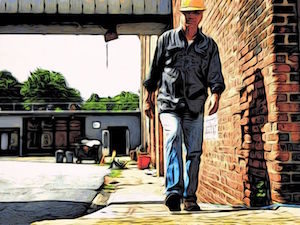Or: Hooked on Fishing

My good friend Jeff Mann, the true Yard Ramp Guy, has asked me to revisit some of my original posts. This week in my From the Archives series:something fishy is definitely going on.

The one that didn't get away.
Fishing: It predates civilization…even the human race. (Birds fish, after all.)
There are plenty of ways people fish, ranging from fishing spears (which are really, really difficult to use) to nets. The best way, or at least most fun, is with a hook and a line. And it's a very old way.
The oldest fish hook in existence was carved out of shell. Fishing hook hunters (or stumble-uponers) found it in East Timor, and it dates back to as much as twenty-three THOUSAND years.
Shell was an extremely common material for ancient fish hooks. Our ancestors crafted hooks from bone, wood, horns, stone, bronze, and eventually iron. Each one of them, however, had problems of its own. Wood, for instance, floats, and that necessitates weights, or heavier bait. One common workaround was using multiple of these materials to leverage their strengths.
Fishing hooks became more common in the archaeological record around 7000 BC. Many of the early fishhooks lacked barbs, which would have made it much more difficult to fish with. In fact, one of the earliest types of fishing hook, known as a gorge hook, wasn't even curved.
The gorge hook is a small stick tapered to a point on each end. A small groove is cut around the middle, where a cord is tied. The cord is then wrapped along the length of the gorge hook, securing a piece of bait to it. When the fish grabs the bait, the cord comes unwound, which then results in the gorge hook turning sideways and lodging in the fish's throat.
This does require you to know the average length of fish in the area, though. The gorge hook has the distinction of being one of the few hooks that aren't prone to stabbing into your thumb.
Fishing with an antique-style hook is definitely a challenge. But the satisfaction you get makes it worthwhile.
Yard Ramp Guy Blog: Pricing Transparency
This week, my friend The Yard Ramp Guy admirably shows how transparency and honesty go hand in hand.
Click HERE to discover the best surprise.







 Photo by Arshiya Urveeja Bose [
Photo by Arshiya Urveeja Bose [